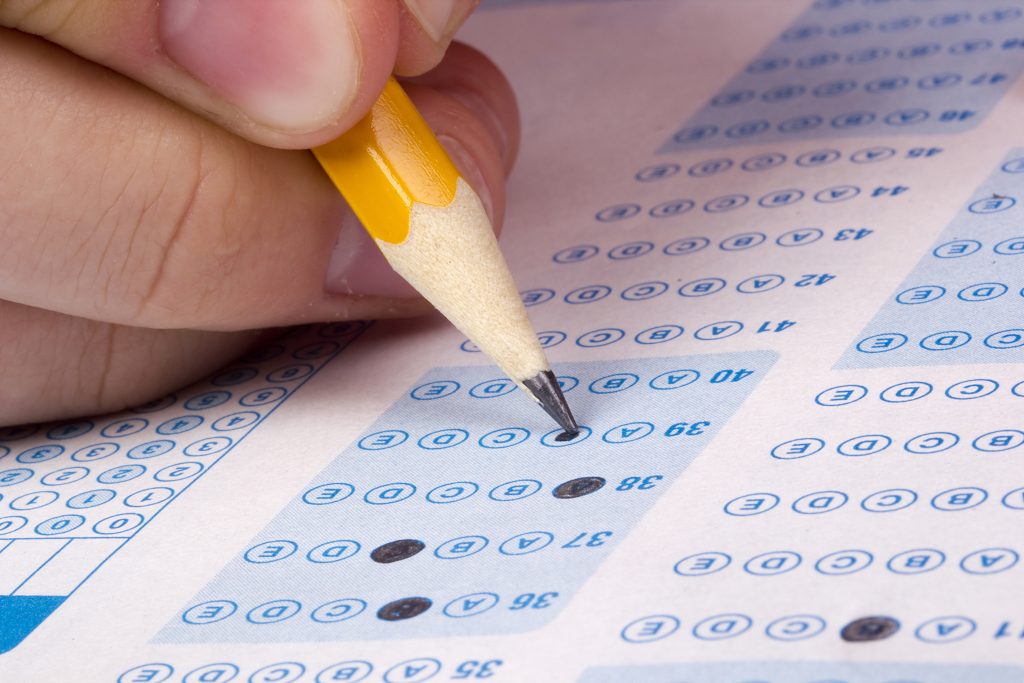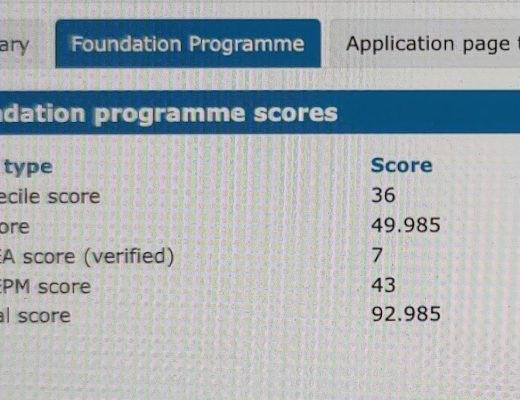The Foundation SJT is an important part of the application process for entering the Foundation Programme (FPAS). In this article, Niamh Rogers explains how she managed to score amongst the top 2% of over 8,000 candidates that took the SJT for Foundation Programme entry in her year. She scored 45.42 and got a place in her 1st choice Foundation Programme, Northern Ireland.

The Foundation SJT
The Situational Judgement Test (SJT) is an exam that is now faced by all final year medical students hoping to gain a Foundation Programme training place in the United Kingdom. As the exam itself has only recently been brought in as a method of selecting candidates to training posts, a lot of speculation and anxiety surrounds the test. The fact that the SJT accounts for 50% of all marks available means that for most students this exam is the single most determining factor in allocation of foundation schools and house officer jobs. I was lucky enough to achieve a high score, placing me in my first choice deanery with my choice of jobs. Here is my experience of preparing for the situational judgement test and hints and tips for performing well on the day.
Emedica Foundation SJT Course
I booked one SJT preparation course, Emedica, to tackle the SJT. I choose Emedica because although the SJT is new for medical students, it has been used for doctors in GP training since 2007, and Emedica has been running courses for it since it began. As my SJT assessment date was in December I made sure to book the earliest course in October to give myself sufficient time to practice.
The course itself was excellent and gave me both the confidence and knowledge to know how to prepare for the exam. Emedica explained the different types of question styles, how to go about structuring your time (in what was an extremely time pressured exam) and to rank each option for the question at face value.
The mock test at the end of the day was a good insight into the process of the exam and the mark obtained was translated into points like in the real SJT.
Preparing for the Exam
The SJT isn’t an exam you can cram for! Speaking from the biggest crammer of every exam going, I soon realised that the SJT was more a “way of thinking ” than something you could learn with intense days of revision before the test. As I was revising for medical finals and doing A&E placements I knew that I would have to schedule some time to practice questions. I found that by doing around 30/45 minutes of questions 3/4 evenings a week, after I had finished revision for the evening, very manageable.
This is where going to the Emedica SJT course came into its own. There are vast numbers of SJT books with hugely varying quality between them. The Emedica course provided you with a question bank that was split into smaller sections- perfect for completing small stints of practice. The questions accurately reflected the content, length and difficulty of questions in the exam.
Initially I didn’t practice timed- I wanted to thoroughly understand why each option was in the order stated. I felt that by understanding why exactly the options ranked in a certain order , it would give me a better insight into what the exam was testing. With about two weeks to go I started timing myself and always tried to use blank answer sheets so that it would become second nature on the day.
I printed out the sample paper online along with a blank mark sheet, and over the course of my revision I did this exam x3 times. I felt that repeating questions helpful as often I was getting the same questions wrong .
Two other SJT books I found useful were Situational Judgement Test for the Foundation Years Programme by Dr Omar Taha and Dr Mizanul Hoque and Get Ahead ! The Situational Judgement Test. These were handy to have in your bag whilst travelling or having a spare few minutes when you could look at question or two.
Exam Day
In order to focus for the exam I had an early night’s sleep, went for a run that morning and made sure to have a good breakfast before the exam. The exam is long and timing is a big factor. I made a mental note of what question I should be on at 30 min intervals and wrote this down on the front of the exam paper when I sat down. Make sure you use the bathroom before you start as the exam is 2 hours 20 minutes long!
I highlighted key words in each question (each word is used specifically as the exam is developed by subject experts and psychologists) . I numbered my order on the exam paper and once happy with my answer, transferred it to the answer sheet. I found using a ruler helped focus my eye and made sure I wrote my answer in the correct box. I went through the paper systematically. I circled some questions that I felt I could spend more time on and returned to them at the end.
In summary, the SJT is a high stakes exam that can be prepared for. Practice little and often can boost your score and give you confidence on the day of the exam. Being extremely familiar with the format of the paper and the answer sheet and preparing mentally to focus for an intense 140 minutes are key factors to succeeding in the SJT.
Best of luck!
Niamh Rogers
Final Year Medical Student Norwich Medical School
Niamh scored 45.42 (within the top 2% in the country) and got a place in her 1st choice Foundation Programme, Northern Ireland.




No Comments